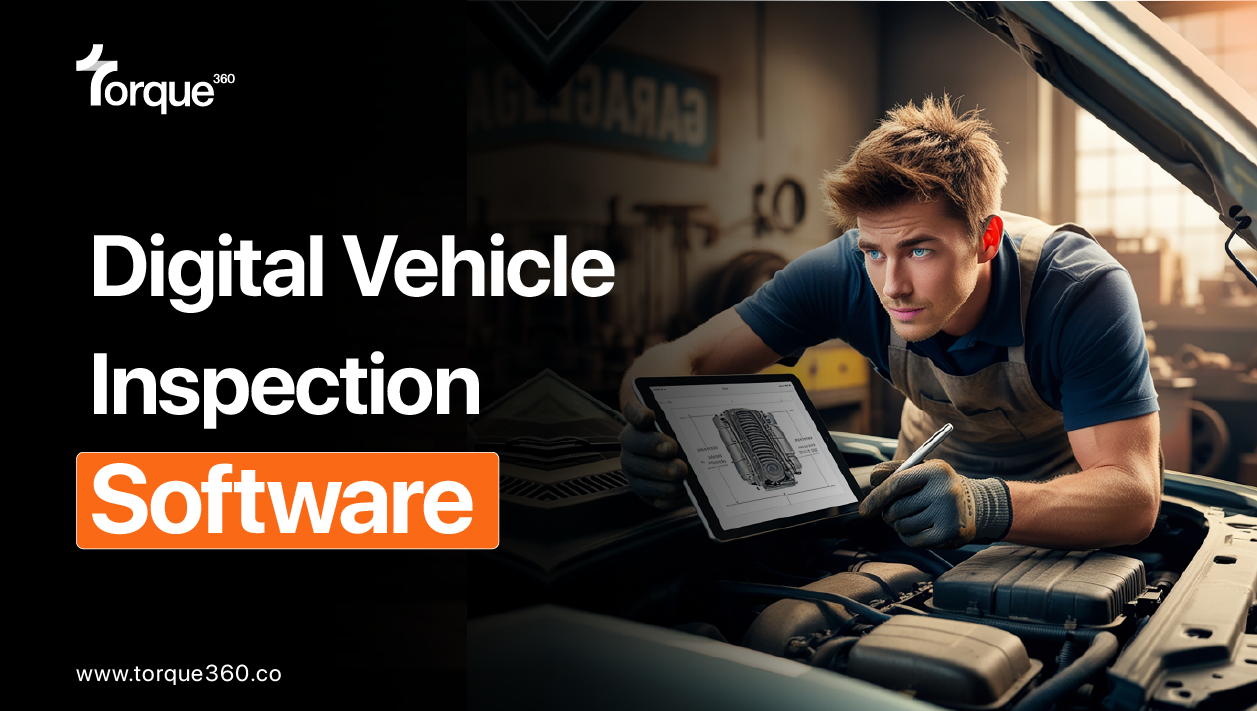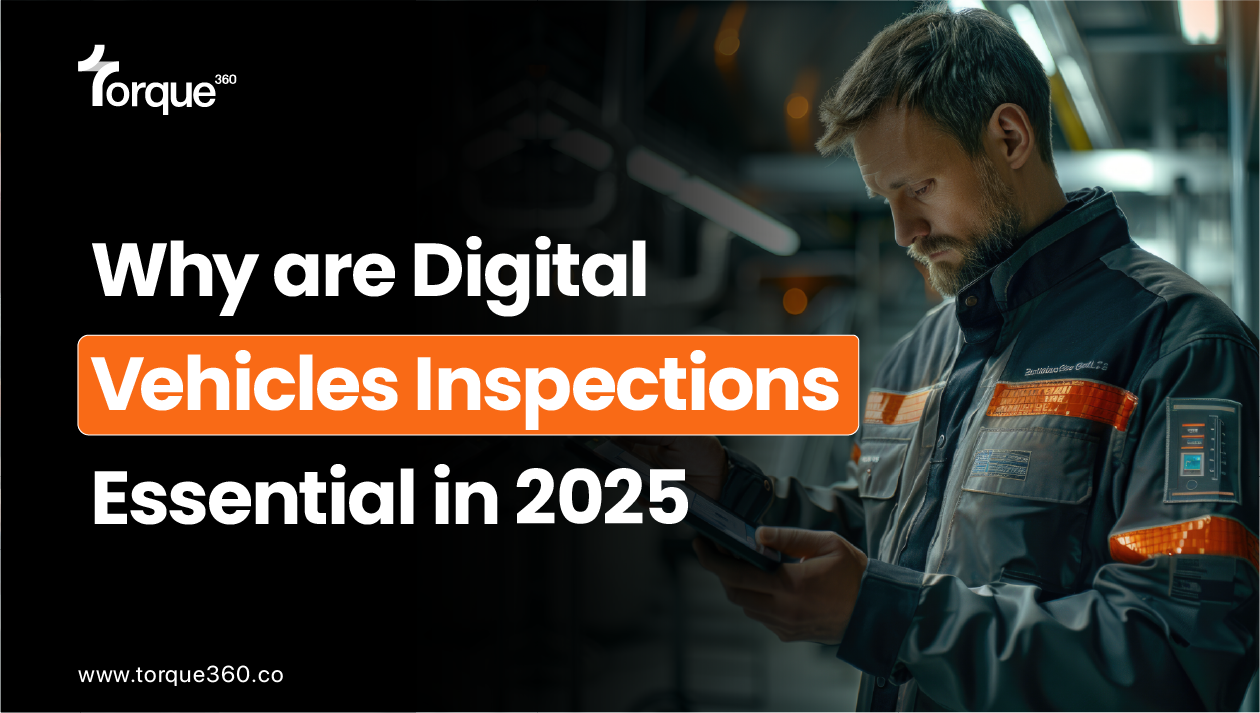In the modern automotive industry, managing vehicle inspections efficiently is critical to maintaining vehicle health and delivering excellent customer service. Traditional methods that rely on pen-and-paper inspections can be cumbersome, error-prone, and time-consuming. Thankfully, advancements in technology have introduced digital vehicle inspection software, a powerful tool that helps automotive professionals streamline inspection processes, increase accuracy, and improve communication with customers.
Digital vehicle inspection software has revolutionized how vehicle inspections are carried out. By eliminating the inefficiencies of manual data entry and paper forms, it allows auto repair shops, fleet managers, and inspection agencies to manage their operations more effectively and with greater precision. This software centralizes all inspection data, making it easier to track multiple vehicles, whether it’s a fleet of commercial vehicles or a shop serving individual customers.
In this blog, we’ll explore how Inspection software for electric vehicles works, the key features it offers, and how it can benefit auto repair shops and fleet operators in simplifying the inspection process, improving accuracy, and increasing customer satisfaction.
What is Digital Vehicle Inspection Software?
Digital vehicle inspection software replaces the traditional paper-based inspection process with a digital, mobile-friendly system. Using a tablet, smartphone, or computer, technicians can conduct inspections on-site, enter data in real-time, attach images and videos of issues, and generate detailed reports instantly. These reports are then shared with the customer, allowing for quicker decision-making on necessary repairs or maintenance.
The software centralizes all inspection data, making it easily accessible for future reference and simplifying communication between the inspection team, management, and customers. Technicians can use customizable inspection checklists to ensure thorough evaluations of each vehicle, minimizing the risk of missing important issues.
Key Benefits of Digital Vehicle Inspection Software
Improved Efficiency and Productivity
One of the key advantages of digital vehicle inspection software is the improvement in efficiency. Technicians no longer have to fill out paper forms and manually transcribe data. Everything is done digitally, speeding up the inspection process and allowing technicians to inspect more vehicles in less time. As a result, auto shops can serve more customers and increase their revenue without compromising the quality of inspections.
The software also eliminates the need for manual filing and searching for paper records. All vehicle inspection reports are stored in a centralized database, making it easier for technicians and managers to access past reports quickly. This improved workflow allows businesses to operate more smoothly, reducing delays and improving overall productivity.
Enhanced Accuracy and Consistency
Manual inspections are subject to human error. Mistakes made during data entry can result in missed issues or incorrect information, leading to costly mistakes and dissatisfied customers. Digital vehicle inspection software reduces these errors by providing standardized checklists and automating the data entry process. This ensures that each inspection is thorough, consistent, and accurate, improving the quality of service offered.
Additionally, images and videos can be attached directly to inspection reports, providing visual evidence of any issues. This further reduces the chance of miscommunication and ensures that the customer understands the problem fully. The ability to include pictures helps customers make informed decisions on whether to approve repairs or maintenance, which can improve customer trust and satisfaction.
Streamlined Communication and Transparency
Communication is vital in the automotive industry, especially when dealing with inspections and repairs. Digital inspection software helps streamline communication by allowing technicians to instantly share their findings with management and customers. Instead of waiting for paper reports to be processed and reviewed, customers can receive real-time updates on the condition of their vehicle. This transparency builds trust and helps ensure that customers feel involved in the decision-making process.
Additionally, shop managers can easily access real-time data, allowing them to track the status of ongoing inspections and ensure that everything is progressing as planned. This also helps prevent miscommunication between technicians and management, as all relevant data is stored and easily accessible.
Cost Savings and Efficiency Gains
While digital vehicle inspection software requires an initial investment, it can help save money in the long run. By reducing the amount of time spent on each inspection, businesses can perform more inspections per day, increasing their overall revenue. The reduction in paper waste and manual labor also helps lower operational costs. Moreover, the improved accuracy of inspections reduces the likelihood of costly mistakes or missed repairs, further improving the bottom line.
Additionally, centralized data storage means that businesses no longer have to keep physical records of inspections, which can be costly and space-consuming. Storing records digitally not only saves money but also makes it easier to comply with industry regulations by keeping accurate and up-to-date records.
Applications of Digital Vehicle Inspection Software
For Auto Repair Shops
Auto repair shops can benefit significantly from digital vehicle inspection software. By using digital tools, shops can standardize their inspection process, ensuring that every vehicle is thoroughly checked and all necessary repairs are identified. This leads to more accurate estimates for customers and minimizes the chance of missed issues that could lead to costly repairs down the line.
The software also improves customer communication by providing detailed reports with images and videos. Customers can easily understand the issues with their vehicles, making them more likely to approve repairs. Additionally, shops can use the software to track maintenance schedules, ensuring that customers are notified when their vehicles are due for service.
For Fleet Management
Fleet managers who oversee multiple vehicles can also benefit from digital vehicle inspection software. Managing a fleet involves tracking the condition of each vehicle and scheduling regular inspections and maintenance. Digital inspection software centralizes this data, making it easy to track the health of all vehicles in real-time. Fleet managers can also use the software to schedule preventive maintenance, ensuring that issues are caught before they result in costly breakdowns.
With the ability to track inspection results over time, fleet managers can make more informed decisions about when to replace or repair vehicles, improving the overall efficiency and cost-effectiveness of fleet operations. Additionally, the ability to generate reports and monitor vehicle performance helps fleet managers comply with industry regulations and maintain accurate records for inspections.
For Inspection Agencies
Inspection agencies, whether public or private, can benefit from the efficiency and accuracy of digital vehicle inspection software. By automating the inspection process and storing data digitally, agencies can provide faster, more accurate services. This reduces paperwork, helps inspectors focus on their tasks, and ensures that inspections are carried out according to the required standards.
Additionally, digital inspection software helps agencies maintain compliance with industry regulations by keeping accurate records of inspections. The centralized data storage ensures that inspection reports are easy to retrieve and that all necessary documentation is readily available when needed.
The Future of Digital Vehicle Inspection Software
As technology continues to evolve, so does the potential of digital vehicle inspection software. The future holds exciting possibilities for even greater efficiency and innovation in the automotive industry. Key trends to watch include:
- Artificial Intelligence (AI) and Machine Learning: These technologies will enable digital inspection software to detect issues more accurately and predict maintenance needs, allowing businesses to proactively address problems before they occur.
- Integration with Other Systems: Future versions of digital vehicle inspection software may integrate even more seamlessly with other business tools, such as customer relationship management (CRM) systems, inventory management tools, and repair scheduling software.
- Mobile Optimization: As smartphones and tablets become even more powerful, digital vehicle inspection platforms will continue to evolve to offer enhanced mobile functionality, making it easier for technicians to complete inspections on the go.
Conclusion
Digital vehicle inspection software offers a wide range of benefits for auto repair shops, fleet managers, and inspection agencies. By streamlining workflows, improving accuracy, and enhancing customer communication, it enables businesses to operate more efficiently and provide a higher level of service. Adopting this technology not only helps reduce operational costs but also increases customer satisfaction, leading to greater loyalty and more business opportunities.
As the automotive industry continues to evolve, adopting innovative solutions like digital vehicle inspection software will be key to staying competitive. By simplifying multi-vehicle inspections with a centralized digital system, businesses can improve their processes, increase productivity, and deliver exceptional service to their customers.





